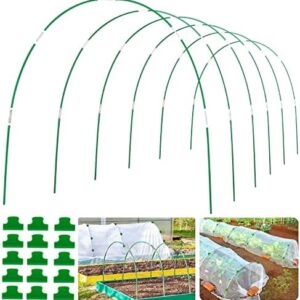When you think about an ideal yard, what comes to mind? Probably a perfectly manicured lawn with colorful flowers and neatly trimmed bushes. But have you ever considered transforming your yard into a wildlife haven? It may sound unconventional, but the environmental benefits are truly worth it.
Just imagine stepping out into your backyard and being greeted by the sight of butterflies fluttering around, birds chirping in the trees, and maybe even a cute little rabbit hopping by. By creating a wildlife-friendly environment in your own yard, you are not only helping to support local biodiversity, but you are also doing your part to preserve and protect the environment for future generations.
One of the biggest environmental benefits of transforming your yard into a wildlife haven is the positive impact on local ecosystems. By planting native plants, providing food and shelter for wildlife, and creating a natural habitat, you are helping to restore the balance of nature in your own little corner of the world. Native plants are essential for supporting local wildlife as they provide food and shelter for a variety of animals, insects, and birds. By planting a diverse range of native plants, you are creating a thriving ecosystem that benefits both wildlife and the environment.
In addition to supporting local biodiversity, creating a wildlife-friendly yard also helps to improve air and water quality. By planting trees and shrubs, you are helping to filter pollutants from the air and mitigate the effects of climate change. Trees act as natural air purifiers, absorbing carbon dioxide and releasing oxygen into the atmosphere. They also provide shade and reduce the need for air conditioning, which can help to lower energy costs and reduce carbon emissions.
In terms of water quality, transforming your yard into a wildlife haven can help to reduce water pollution and runoff. By planting native plants and creating natural water features such as rain gardens or ponds, you can help to filter and absorb rainwater, preventing it from carrying pollutants into local waterways. This not only helps to protect water quality but also reduces the risk of flooding and erosion.
Another important environmental benefit of creating a wildlife-friendly yard is the conservation of natural resources. By using native plants that are adapted to the local climate and soil conditions, you can reduce the need for water, fertilizers, and pesticides. Native plants require less maintenance and are more resistant to pests and diseases, which means you can spend less time and money on lawn care and more time enjoying your yard.
Transforming your yard into a wildlife haven can also help to create a more sustainable and resilient landscape. By mimicking natural ecosystems and creating a diverse habitat, you are creating a self-sustaining environment that requires minimal intervention and maintenance. This can help to reduce the negative impacts of human activities on the environment and create a more harmonious relationship between people and nature.
In addition to the environmental benefits, creating a wildlife-friendly yard can also bring a sense of joy and connection to nature. Watching birds feed on your native plants, observing butterflies fluttering in the breeze, and listening to the soothing sounds of a backyard pond can help to reduce stress and anxiety and improve mental well-being. By nurturing a connection to the natural world, you can gain a greater appreciation for the beauty and complexity of the environment and feel a sense of responsibility to protect and preserve it for future generations.
So, what are you waiting for? Take the first step towards transforming your yard into a wildlife haven and start reaping the environmental benefits today. Whether you have a small backyard or a sprawling garden, there are countless ways to create a habitat that supports local wildlife and contributes to a healthier and more sustainable environment. From planting native plants to creating natural water features, the possibilities are endless. Let’s work together to create a greener, more wildlife-friendly world for all living creatures to enjoy.






